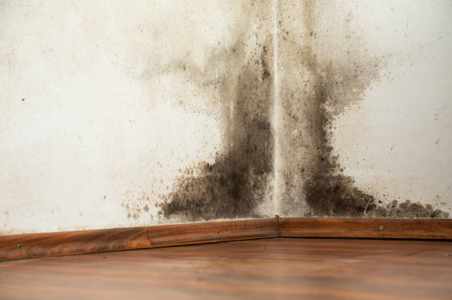Are You Ignoring Black Mould in Your Shower? Here’s What It Could Mean for Your Health
By
Gian T
- Replies 0
Let’s face it—no one enjoys scrubbing the bathroom, and it’s all too easy to turn a blind eye to those dark patches creeping along your shower grout. But before you dismiss that black mould as just a cosmetic nuisance, it’s worth understanding what it really means for your home—and your health.
Why Does Mould Love Bathrooms So Much?
Mould spores are everywhere in our environment, floating invisibly through the air. All they need is a little moisture, a food source (like soap scum or skin cells), and the right temperature to settle in and start growing. Unfortunately, our bathrooms are the perfect breeding ground: steamy showers, poor ventilation, and damp surfaces create a haven for mould to thrive.
Not All Black Mould Is Created Equal
You might have heard horror stories about 'toxic black mould,' but the truth is a bit more nuanced. According to John Liddell, managing director of The Mould Doctor, there are over 100,000 different types of mould. Some are relatively harmless, while others can pose health risks—especially for people with allergies, asthma, or weakened immune systems.
The infamous Stachybotrys chartarum (often called 'toxic black mould') is usually linked to serious water damage and persistent dampness. If you spot thick, dark patches in areas that have been wet for a long time—like after a leak or flood—it’s time to call in the professionals.
What’s That Black Stuff in Your Shower Grout?
If you’re seeing black streaks or spots in your shower grout, it’s most likely a different type of mould called Aureobasidium. Michael Taylor, a lecturer at Flinders University’s School of the Environment, explains that Aureobasidium is a slimy, sticky fungus that sits somewhere between a threadlike mould and a single-celled yeast.
The good news? While it looks unsightly, Aureobasidium is generally less dangerous than the dreaded 'toxic' moulds. The bad news? It can be stubborn, and even after you kill it, the dark stains may linger.
How to Tackle Mould in Your Shower—The Right Way
You might be tempted to reach for the strongest bleach you can find, but experts say technique matters more than the product. Lucinda Curran, an Indoor Environmental Health Consultant, recommends using a microfibre cloth to physically remove mould from surfaces. Unlike regular cloths, microfibre is designed to pick up and trap particles rather than just smearing them around.
Here’s a step-by-step guide to banishing mould from your shower grout:
1. Ventilate the Area: Open windows and doors, and turn on the exhaust fan if you have one.
2. Wear Protection: Pop on some gloves and, if you’re sensitive, a mask to avoid inhaling spores.
3. Apply a Mould-Killing Solution: You can use a diluted bleach solution (1 part bleach to 10 parts water), white vinegar, or a commercial mould remover. Spray it onto the affected area and let it sit for at least 10 minutes.
4. Scrub with a Microfibre Cloth: Gently scrub the grout, focusing on the mouldy spots. Rinse the cloth frequently to avoid spreading spores.
5. Rinse and Dry: Wipe down the area with clean water and dry thoroughly.
6. Dispose of Cleaning Materials: Wash your microfibre cloth in hot water or dispose of it if it’s heavily soiled.
Preventing Mould from Coming Back
Prevention is always better than cure! Here are some simple tips to keep your bathroom mould-free:
- Keep it dry: Wipe down shower walls and doors after use.
- Improve ventilation: Use an exhaust fan or open a window during and after showers.
- Fix leaks promptly: Even a small drip can create the perfect environment for mould.
- Seal grout: Consider applying a grout sealer to make it less porous and easier to clean.
When Should You Call a Professional?
If you notice a musty smell that won’t go away, see mould spreading rapidly, or suspect water damage behind walls or under floors, it’s time to call in the experts. Some moulds can cause health issues, especially for older adults or those with respiratory conditions.
The Bottom Line
While not all black mould is a health hazard, it’s always best to deal with it promptly. Regular cleaning and good ventilation can keep your bathroom looking—and smelling—fresh. And remember, if you’re ever in doubt about the type of mould you’re dealing with, don’t hesitate to seek professional advice.
 Have you battled bathroom mould? What tips or tricks have worked for you? Share your experiences in the comments below—your advice could help a fellow member keep their home healthy and sparkling!
Have you battled bathroom mould? What tips or tricks have worked for you? Share your experiences in the comments below—your advice could help a fellow member keep their home healthy and sparkling!
Why Does Mould Love Bathrooms So Much?
Mould spores are everywhere in our environment, floating invisibly through the air. All they need is a little moisture, a food source (like soap scum or skin cells), and the right temperature to settle in and start growing. Unfortunately, our bathrooms are the perfect breeding ground: steamy showers, poor ventilation, and damp surfaces create a haven for mould to thrive.
Not All Black Mould Is Created Equal
You might have heard horror stories about 'toxic black mould,' but the truth is a bit more nuanced. According to John Liddell, managing director of The Mould Doctor, there are over 100,000 different types of mould. Some are relatively harmless, while others can pose health risks—especially for people with allergies, asthma, or weakened immune systems.
The infamous Stachybotrys chartarum (often called 'toxic black mould') is usually linked to serious water damage and persistent dampness. If you spot thick, dark patches in areas that have been wet for a long time—like after a leak or flood—it’s time to call in the professionals.
What’s That Black Stuff in Your Shower Grout?
If you’re seeing black streaks or spots in your shower grout, it’s most likely a different type of mould called Aureobasidium. Michael Taylor, a lecturer at Flinders University’s School of the Environment, explains that Aureobasidium is a slimy, sticky fungus that sits somewhere between a threadlike mould and a single-celled yeast.
The good news? While it looks unsightly, Aureobasidium is generally less dangerous than the dreaded 'toxic' moulds. The bad news? It can be stubborn, and even after you kill it, the dark stains may linger.
How to Tackle Mould in Your Shower—The Right Way
You might be tempted to reach for the strongest bleach you can find, but experts say technique matters more than the product. Lucinda Curran, an Indoor Environmental Health Consultant, recommends using a microfibre cloth to physically remove mould from surfaces. Unlike regular cloths, microfibre is designed to pick up and trap particles rather than just smearing them around.
Here’s a step-by-step guide to banishing mould from your shower grout:
1. Ventilate the Area: Open windows and doors, and turn on the exhaust fan if you have one.
2. Wear Protection: Pop on some gloves and, if you’re sensitive, a mask to avoid inhaling spores.
3. Apply a Mould-Killing Solution: You can use a diluted bleach solution (1 part bleach to 10 parts water), white vinegar, or a commercial mould remover. Spray it onto the affected area and let it sit for at least 10 minutes.
4. Scrub with a Microfibre Cloth: Gently scrub the grout, focusing on the mouldy spots. Rinse the cloth frequently to avoid spreading spores.
5. Rinse and Dry: Wipe down the area with clean water and dry thoroughly.
6. Dispose of Cleaning Materials: Wash your microfibre cloth in hot water or dispose of it if it’s heavily soiled.
Preventing Mould from Coming Back
Prevention is always better than cure! Here are some simple tips to keep your bathroom mould-free:
- Keep it dry: Wipe down shower walls and doors after use.
- Improve ventilation: Use an exhaust fan or open a window during and after showers.
- Fix leaks promptly: Even a small drip can create the perfect environment for mould.
- Seal grout: Consider applying a grout sealer to make it less porous and easier to clean.
When Should You Call a Professional?
If you notice a musty smell that won’t go away, see mould spreading rapidly, or suspect water damage behind walls or under floors, it’s time to call in the experts. Some moulds can cause health issues, especially for older adults or those with respiratory conditions.
The Bottom Line
While not all black mould is a health hazard, it’s always best to deal with it promptly. Regular cleaning and good ventilation can keep your bathroom looking—and smelling—fresh. And remember, if you’re ever in doubt about the type of mould you’re dealing with, don’t hesitate to seek professional advice.
Key Takeaways
- Black mould in your shower grout is usually caused by a fungus called Aureobasidium, which is slimy and sticky but not necessarily toxic.
- Bleach can often kill the mould, but the dark staining may persist even after cleaning – though it’s generally harmless.
- The most effective way to remove mould is by physically wiping it away with a microfibre cloth rather than just relying on cleaning products.
- It’s important to avoid cross-contamination while cleaning, as mould can easily spread to other areas and release more spores.








